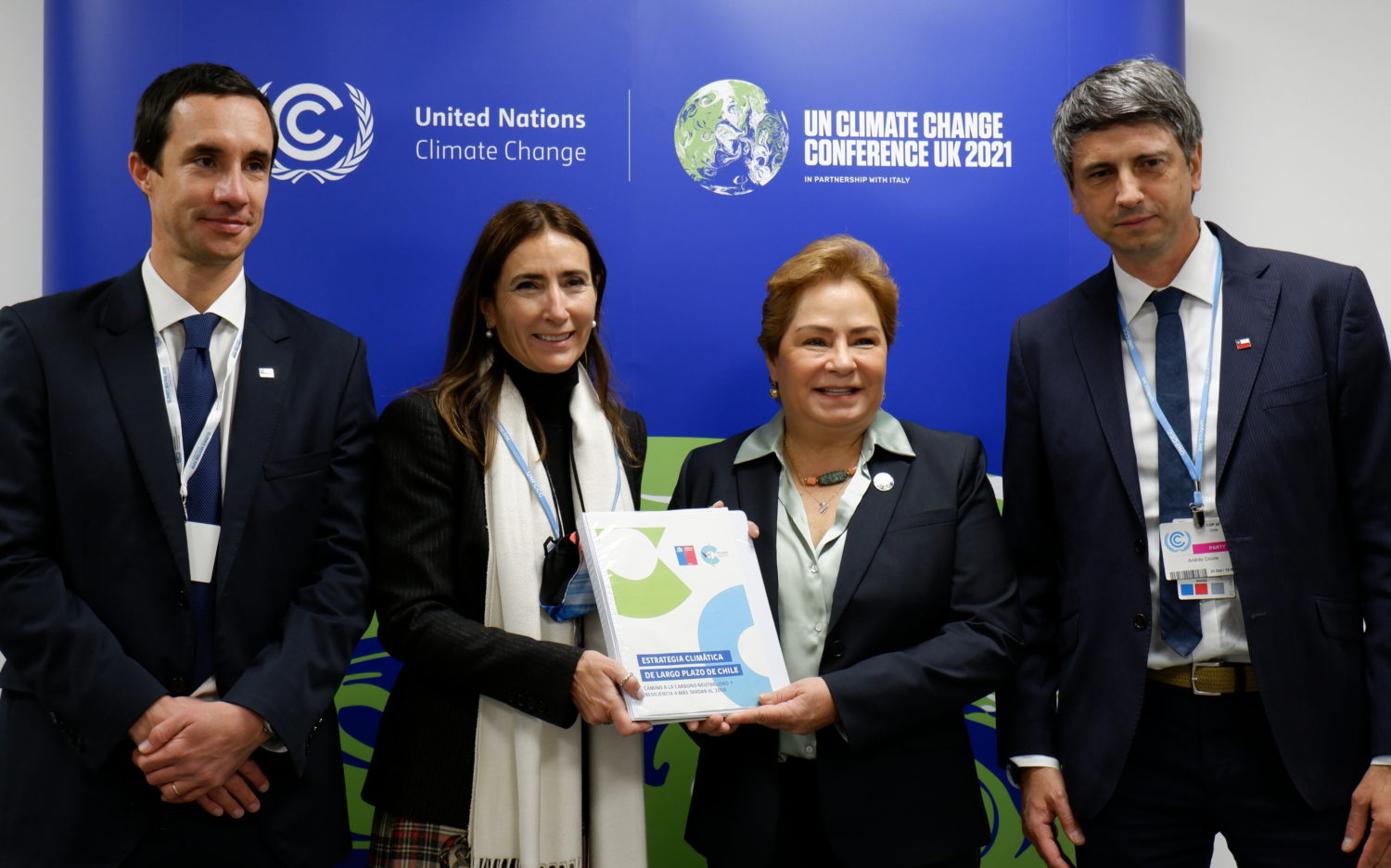Minister of the Environment and former President of COP25, Carolina Schmidt – accompanied by her colleagues from Science and Mining and Energy of Chile – met with the executive secretary of UN Convention on Climate Change and presented the roadmap, which sets out how Chile will become carbon neutral and climate resilient no later than 2050.
During the ongoing COP26 conference held in Glasgow, Scotland, the Chilean government officially submitted the country’s Long Term Low Emissions Strategy (LT-LEDS) to the executive secretary of UN Climate Change, Patricia Espinosa. The strategy presents a roadmap setting out specific sectoral objectives and goals that will enable Chile to become carbon neutral and climate resilient by 2050 at the latest, in line with the latest science.
The document was handed over this morning by the Minister of the Environment and COP25 President, Carolina Schmidt, accompanied by the bi-minister of Mining and Energy, Juan Carlos Jobet, and the Minister of Science, Andrés Couve.
Minister Schmidt noted “we are fulfilling our commitment to deliver our Long Term Strategy to UN Climate Change, establishing 407 transition and transformation goals for all key sectors of the country, with these goals being enhanced year on year to ensure they are achieved. We are the first country in South America to comply with the provisions of the Paris Agreement and deliver this roadmap”.
The Executive Secretary of UNFCCC, Patricia Espinosa, commented that it is “an important achievement that confirms the commitment of the Chilean government and people to truly sustainable development. The strategy presented today is consistent with the goals of the Paris Agreement and establishes sectoral carbon budgets based on the commitments assumed by Chile in its Determined Contribution at the National Level”.
Bi-minister Jobet highlighted that “the Long-Term Climate Strategy addresses the transformation of the energy sector as one of its fundamental pillars. We are withdrawing coal-fired power plants and developing renewables, which will allow us to use clean energy in different sectors of the economy such as transport, industry, and also in our homes”.
Minister Couve noted that completion of the strategy marks “one of Chile’s key commitments in the fight against climate change. The Ministry of Science contributed to the previous report, including reports related to nature-based solutions and the country’s Technology Transfer Strategy as one of its implementation mechanisms”.
Goals
To achieve carbon neutrality and become a climate-resilient country, the LT-LEDS set out specific goals and actions for the country to tackle these challenges, establishing priorities by sector and delivery year. In total, it presents 407 actions.
For example, by 2025 Chile will take 65% of its coal-powered generation offline, protect between 10,000 to 15,000 hectares of urban wetlands, establish a mandatory eco-labeling on the recyclability of products and that 100% of marine protected areas should have management plans.
Meanwhile, goals to 2030 include renewable sources accounting for 80% of power generation, increasing Chile’s network of glacier monitoring stations by 50%, delivering a completely zero-emission fleet of vehicles in large scale mining, and ensuring that 100% of the urban population achieves access to health services.
By 2040, the goal is for green hydrogen to account for 20% of the country’s fuel matrix; for 100% of buses and taxis to be zero emission vehicles; and for the waste deposition in Chile’s oceans and beaches to be reduced by 40%.
By 2050, the strategy sets out that Chile’s energy matrix will be 100% zero emissions, emissions from industry and mining will be cut by 70%, and that that 30-50% of threatened species have Recovery, Conversation and Management Plans.

